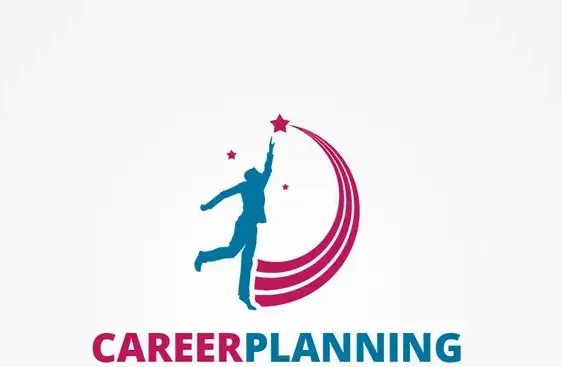No matter what job you have or what field you work in, strong communication skills are essential—meaning the abilities, traits, and knowledge that help you share and receive information. Whether you’re reaching out to potential customers, meeting with clients, emailing your boss, drafting a press release, chatting with coworkers, or doing anything else that involves sending or receiving a message, your communication skills make it all possible.

“Communication is everything,” says Terry Rubin, cofounder and co-owner of The Professional Communicators, a consulting firm specializing in workplace communication and public speaking coaching. “People judge your competence, ideas, strengths, weaknesses, and potential based on how you communicate.” For example, Rubin explains, a highly skilled software engineer who can’t clearly explain a plan or problem to their team or managers might lose credibility due to misunderstandings.
Good communication ensures that team members or colleagues work well together and reach their goals. “It’s important to remember that organizations are, at their core, groups of individuals working together and making decisions to achieve a shared mission,” says Akhila Satish, CEO of Meseekna, a company that advises businesses on decision-making and company culture. “Without communication, people may not understand each other or their organization’s objectives.” Even if you’re self-employed, you still need to talk to clients or customers to meet your own business goals!
“Bottom line: Strong communication makes expectations clear, ensures voices are heard, makes people feel respected, and keeps relationships and job performance healthy,” says communication expert Julie Quinne, a leadership strategist and coach with over 20 years of HR experience.
Keep reading to learn about different types of communication and eight key communication skills for the workplace—plus how to improve your skills and showcase them in your next job search.
What Are the Most Common Types of Communication?
Communication happens in many different ways and through various mediums. “There’s no ‘one-size-fits-all’ method that will work for everyone on your team,” Satish says. “I’d suggest getting to know your teammates and figuring out what works best for them.”
Here are the four most common forms of communication you’ll use at work:
- Verbal Communication – This includes the words you say and hear, whether in person, over the phone, or on a video call. In short, it’s speaking and listening. (Hint: Listening is often the more important part!)
- Nonverbal Communication – This covers the messages we send without words—body language, tone of voice, how we position ourselves, and even how we dress or present ourselves.
- Written Communication – This is any information shared through text. Emails, texts, Slack messages, social media posts, comments on documents, and even this article are all examples. Strong writing skills are crucial in any job.
- Visual Communication – This involves using images like charts, graphs, or tables to share information. PowerPoint presentations, data visualizations, and branding designs all fall under this category.
You probably use all four types, but depending on your role, some may be more important than others.
8 Key Communication Skills for the Workplace
Here are eight communication skills to help you express yourself clearly and understand others effectively at work.
1. Active Listening
Active listening means fully focusing on the speaker, understanding their message, and picking up on their emotions and intent. It helps you gather information, avoid misunderstandings, build relationships, and collaborate better.
When you actively listen, “You’re completely present,” says Amanda Newton, an executive coach and communications professional in the mental health industry. Your “focus is on the other person,” not just their words but also their tone, body language, and other cues. If you’re just waiting for your turn to talk or only listening for what you need, you’re not truly engaged.
To listen actively:
- Make eye contact, face the speaker, and nod or react naturally.
- Engage with what they’re saying—take notes, ask questions, summarize their points, and offer solutions (but only if it feels genuine).
“Active listening can be magical—or it can feel robotic and frustrating,” says Amie Devero, founder of Beyond Better and an executive coach who trains professionals in workplace communication. “Everyone’s had a customer service rep overuse their name and just parrot back what they said. But real active listening shows empathy and commitment. Listen to understand both the words and the experience behind them.”
You can apply similar strategies to written or visual communication by asking: What’s the intent here? What emotions are coming through? Respond with thoughtful questions, restate key points to confirm understanding, and reply appropriately.
2. Clarity
Clear communication has two parts: knowing exactly what you want to say and making sure your audience understands it.
“Defining your key takeaways before you communicate helps bring clarity,” Rubin says. Planning might take minutes for a quick message or weeks for a big presentation—but always pause before speaking or writing. Ask yourself: What should the other person take away from this? Do you need to update them, ask for something, resolve an issue, or give praise?
Once you know your goal, make sure it’s obvious in your message. Are you being direct or vague? Does the other person have enough context? If you’re making a request, be extra clear. “State what’s needed, what success looks like, the deadline, and the priority level,” Newton says. And if you’re unsure whether your message landed, just ask.
Clarity ties into many other skills, like audience awareness and choosing the right communication method.
3. Audience Awareness
This means tailoring your message to the person or group you’re communicating with. What works for one audience might not work for another. For example, explaining a work issue to your manager might require less background than explaining it to company leadership or an outside stakeholder, Rubin notes.
Before communicating, consider:
- What does your audience already know about the topic?
- What’s their stake in the situation? (E.g., finance cares about costs; marketing cares about customer messaging.)
- How do they prefer to receive information? (Do they like examples, big-picture ideas, or visuals?)
- Will they understand industry jargon?
- Why should they care about what you’re saying?
Then, adjust your message accordingly—and watch their reactions so you can adapt in real time.
4. Communication Method and Tone Choice
Picking the right way to communicate can make or break how well your message is received. Think beyond just verbal, written, or visual—consider whether a casual chat, formal email, or video call is best.
To choose wisely:
- Know your audience: A quick Slack message might work for a close coworker, but leadership may expect a polished email.
- Match the medium to the message: Use email for detailed updates, a face-to-face talk for sensitive topics, or a presentation for data-heavy info.
- Be inclusive: If team members are deaf or hard of hearing, use closed captions in video calls, says Di Ciruolo, a DEI consultant and author. “Good communication is a shared responsibility,” Ciruolo says—don’t put the burden solely on the other person.
- Play to your strengths: If writing isn’t your forte, maybe a meeting works better. Women and minorities may need to choose methods that ensure their voices are heard.
Tone matters too. Keep it professional with serious topics or new contacts; casual is fine if the relationship allows. When in doubt, lean formal. “Write in full sentences with proper punctuation,” Devero says. “Text-speak might send the wrong message. Communicate like a professional to be seen as one.” Above all, “Treat everyone with respect.”
5. Emotional Intelligence and Empathy
Emotional intelligence (EQ) means recognizing and managing emotions—yours and others’. In the workplace, this often translates to empathy, which builds trust, prevents conflict, and fosters a positive environment.
To use EQ at work:
- Check in with yourself. If a coworker’s mistake frustrates you, acknowledge that before reacting.
- Consider the other person’s feelings. If their behavior seems off, ask what’s going on. “If something seems surprising, it might be driven by outside factors,” Satish says. “Understand the full picture before focusing on work.”
- Pick the right time for tough talks. If someone’s swamped, it’s not the moment to discuss a denied raise.
6. Giving and Receiving Constructive Feedback
Feedback helps people grow and ensures quality work. “It’s critical for organizational growth,” Satish says. When done well, it benefits both parties.
When giving feedback:
- Be specific, actionable, and example-driven. Instead of “This design is sloppy,” say, “The Q2 numbers on slide 3 should be Q3, and slide 8 may have a math error. Double-checking next time could help.”
- Never make it personal. Focus on actions, not character.
When receiving feedback:
- Don’t get defensive. Listen actively and consider the broader application. Maybe the feedback isn’t just about one project but a habit to adjust.
- You don’t have to accept all criticism blindly—just reflect on it.
7. Body Language Awareness
Nonverbal cues—posture, eye contact, facial expressions—speak volumes. Pay attention in four scenarios:
- Others’ body language while listening: Are they engaged or confused? Adjust your delivery accordingly.
- Others’ body language while speaking: What does their demeanor add to their words?
- Your body language while listening: Nodding and maintaining eye contact shows respect.
- Your body language while speaking: Smiling and standing confidently conveys assurance; slouching or fidgeting can signal nervousness.
“Mirroring someone’s body language can build quick rapport,” Newton says. But be mindful of personal space, especially in professional settings.
8. Presenting and Public Speaking
Most jobs require speaking to groups, whether sharing ideas, results, or updates. Public speaking (talking to a crowd) and presentations (structured talks, often with slides) rely on other skills like clarity, audience awareness, and body language.
To succeed:
- Know your goal and stay on track. Notes can help if you ramble or get nervous.
- Tailor your message. Avoid jargon if the audience isn’t familiar with it.
- Watch your audience’s reactions. Speed up, slow down, or invite questions as needed.
- If using slides, keep them clean. “Fewer words, more visuals,” Rubin says. “Slides should enhance, not replace, the speaker.”
Many think public speaking is a natural talent, but it’s a skill you can improve. Start small—speak up in meetings or practice with friends—and build confidence over time.
How to Improve Your Communication Skills
You can get better at any communication skill with effort. Here’s how:
- Pick one skill to focus on (e.g., clarity in writing or confident presenting).
- Ask for help—find a skilled friend or colleague for advice.
- Take a class or hire a coach if needed.
- Educate yourself on communication barriers faced by marginalized groups. Learn inclusive language and allyship.
- Practice regularly—in networking groups, with friends, or at work.
How to Showcase Communication Skills in a Job Hunt
Employers value strong communicators. Prove you are one by:
- Identifying key skills for the job (check the job description for writing, presenting, or teamwork needs).
- Highlighting them in your resume and cover letter (use examples and quantify results).
- Demonstrating them in interviews (listen actively, speak clearly, watch body language).
- Communicating professionally throughout the hiring process (polite emails, thank-you notes, prompt replies).

